by Brenda S. Cox
I was sure it [a latter from Jane Fairfax] could not be far off; but I had put my huswife upon it, you see, without being aware, and so it was quite hid”—Miss Bates, Emma, chapter 19
Jane Austen Embroidery
Happy fall! I just finished embroidering and sewing a harvest-themed “huswife,” (or “housewife”). The pattern for it came from a gorgeous book, Jane Austen Embroidery: Regency Patterns Reimagined for Modern Stitchers, by Jennie Batchelor and Alison Larkin.
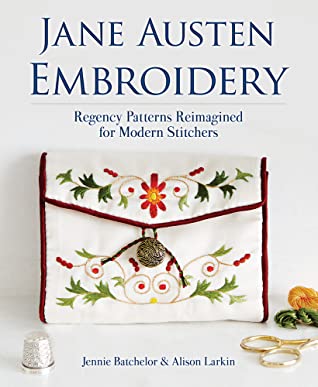
Batchelor spent years gathering embroidery patterns from The Lady’s Magazine. This magazine, published from 1770-1832, was very popular in Jane Austen’s time. Its readers could explore science, politics, fashion, and other areas, as well as read poetry and serialized novels in its issues. Embroidery patterns and sheet music were provided, though often removed from the magazine. Batchelor and Larkin took the embroidery patterns they found and adapted them to modern sewing projects.
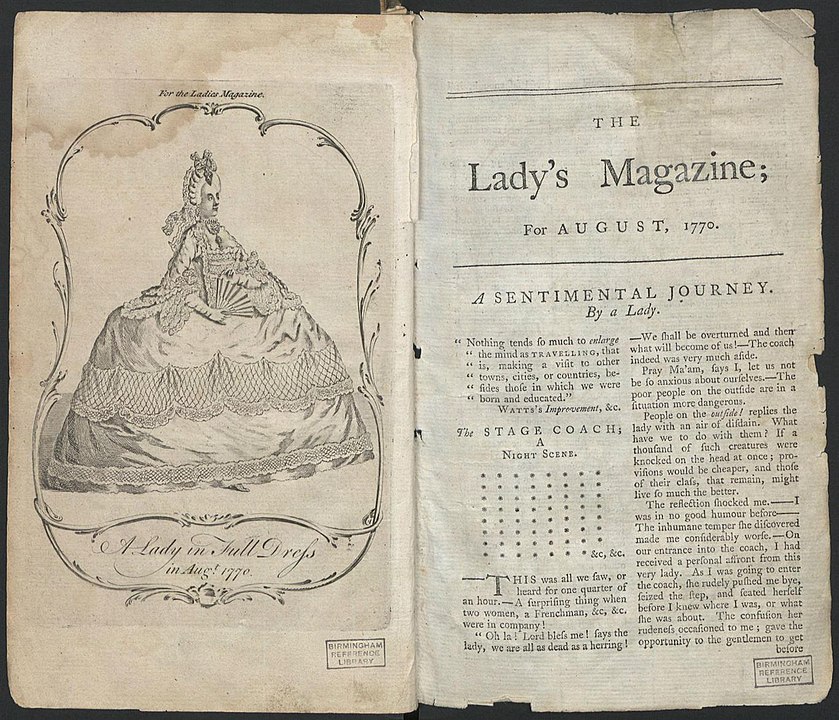
The book gives general instructions for setting up and sewing projects. Specific, detailed instructions with diagrams and pictures for each project follow.
Each section explains different uses of embroidery in Austen’s England. The authors explore clothes, accessories, and uses of embroidery in the home. I learned, for example, that girls sometimes learned geography by stitching map samplers; patterns were included in the Lady’s Magazine. The book shows a picture of a 1797 map sampler showing the countries of Europe (116). (When I was homeschooling my children, I had them color maps, and even once we made a map out of colored eggshells—which I don’t recommend—but such activities helped them learn geography!)
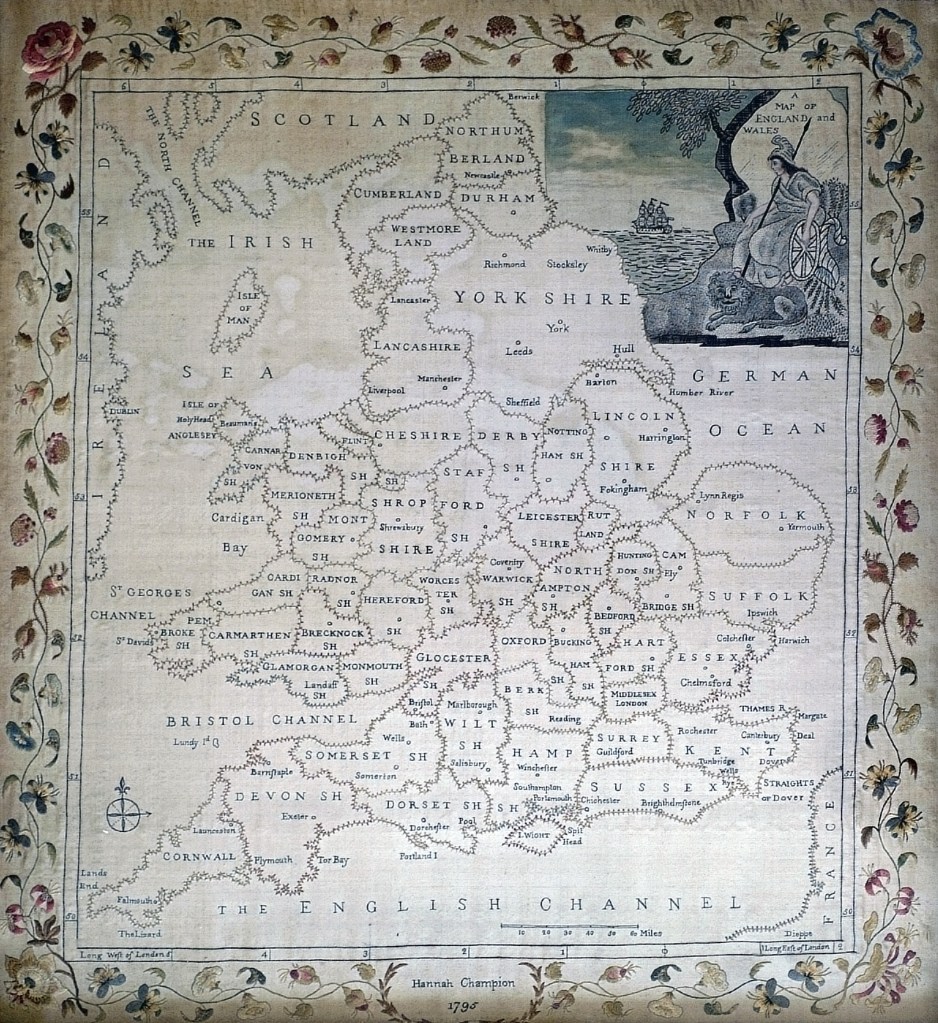
The Projects
Each section includes five projects, labeled “Beginner,” “Intermediate,” or “Advanced.”
A beginning stitcher might sew a simple flower pattern (“sprig,” as in “sprigged muslin”), or make a pencil case, napkins, or a cell phone pouch.
An intermediate stitcher might prefer to sew a reticule or jewelry pouch, elegantly stitched with golden leaves, or a Georgian sewing set including a scissor pouch, needle case, and pincushion decorated with flowers.
The advanced stitcher can make a muslin shawl embellished with whitework, inspired by a shawl in the Jane Austen’s House Museum (purported to be the work of Jane Austen herself). Or they might try an Etruscan circular cushion, or my choice, a housewife (or huswife).
I found the items actually used in Austen’s time most interesting: the housewife, reticule, shawl, tea box top, work bag, and sewing set.
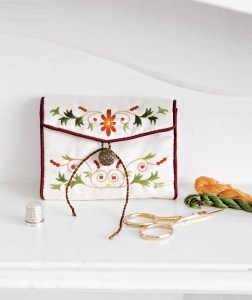
The Housewife or Huswife
The housewife is a sort of roll-up sewing set, with pockets and holders for various sewing supplies. It might also have been used to hold other items, like coins or letters. You may own a similar article for your jewelry, toiletries, or cosmetics.
Jane Austen made one of these for her sister-in-law Mary Lloyd, and wrote a poem to go with it. She hoped that when Mary used the housewife she would think of Jane. I haven’t been able to find a picture of that housewife anywhere. The Jane Austen House Museum does have a little needle case, made of cardstock and felt, which Jane Austen made for her niece. That would be fun to try to recreate.
I decided to likewise make my housewife as a gift, for a young lady who enjoys cross stitch. The book is full of potential gift ideas, and Christmas is coming soon.
My Project
The “housewife” is designed to hold needles, embroidery scissors, a measuring tape, seam ripper, and even a little notebook and pencil. The sample pictured above is hand-sewn with silk fabric, silk threads, and cording wrapped in red silk. It’s lovely, but my budget and time are both limited. And, I don’t know that Jane Austen would have been able to afford to make such an everyday item out of silk. (Remnants from gowns might have been used, though.)
So I decided to try making the housewife, following the pattern, with cheaper materials. I went to my local Hobby Lobby when fabric was on sale (which I think happens every other week.) I used a poly satin instead of silk, remnants of cotton and flannel for the backing and padding, and a cute Winnie-the-Pooh cotton for the lining.
The back of the book includes a chart showing the equivalent DMC and Anchor colors for the silk colors listed for each project. So I could easily use the DMC thread I had. I substituted machine-made orange piping for the silk-wrapped cord around the edges. I spent only about $20 for my materials, including needles and marking pencils. To save time, I used a sewing machine for the assembly where possible.
While it’s been years since I did this sort of embroidery (I normally only do cross-stitch), it was fun re-learning and creating the gorgeous fall design. (My sewing was far from perfect, as you may notice, but it still turned out pretty, I think. So don’t worry about your mistakes!) Instructions were mostly clear, though I did have to search for a youtube video which showed me how to do the stem stitch/outline stitch; sometimes you need a demonstration along with an explanation.
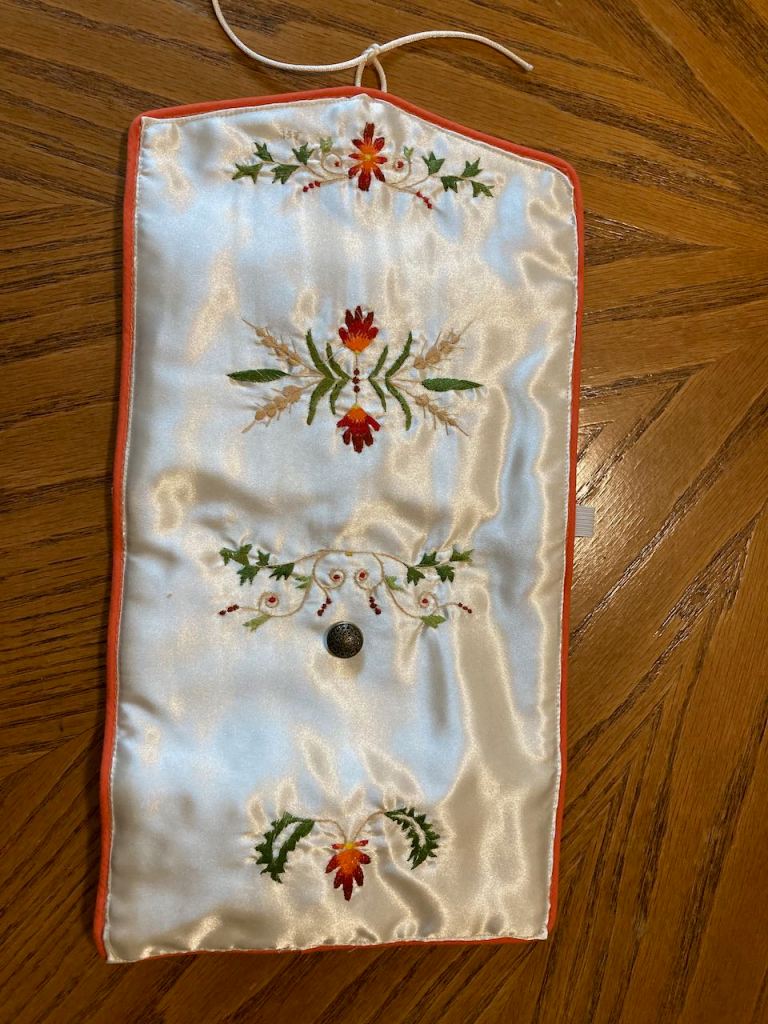
For assembling the inside of the housewife, I again found detailed instructions. However, this was definitely an advanced, complicated project. A diagram to tie it all together would have been helpful. I asked for a photo, and Alison helpfully sent me several; one is below. In the end, I changed some of the inside pockets and fastenings to give me a custom-designed “housewife” for cross-stitching needs. I kept the notebook and pencil setup, though I made the housewife substantially wider so it would fit the size notebook and pencil I had available. It was not difficult to cut the fabric wider and slightly adapt the pattern. I also made the housewife slightly longer, but I don’t recommend doing that; it was difficult to get it right.

I made the scissors pouch more simply than the one in the book. I just made a regular pocket and added flannel to the bottom so the scissors would not poke through, rather than trying to reinforce it as shown in the book. I did put the little flap on top to keep the scissors in.
I had found a cute frog measuring tape, made by Paradise Exotic Accessories, at a sewing shop (you can get it online here). So I just put in a button to hold that (matching the outside button.) And at the bottom I made a simple pocket which snaps shut. I reinforced the outside of the pocket with a couple of layers of flannel underneath, so it can be used to hold pins and needles. Even with just 1/4 yard of fabric, I had enough to match the Winnie-the-Pooh designs on the pockets with the lining.

For cross-stitch, I love Floss-A-Way. I keep my threads in little plastic bags on snap-shut rings. So I added two elastic holders to the housewife. One is for the rings of thread used for the current project. The other snaps together, and holds a hoop. So the cross-stitcher will be all set.
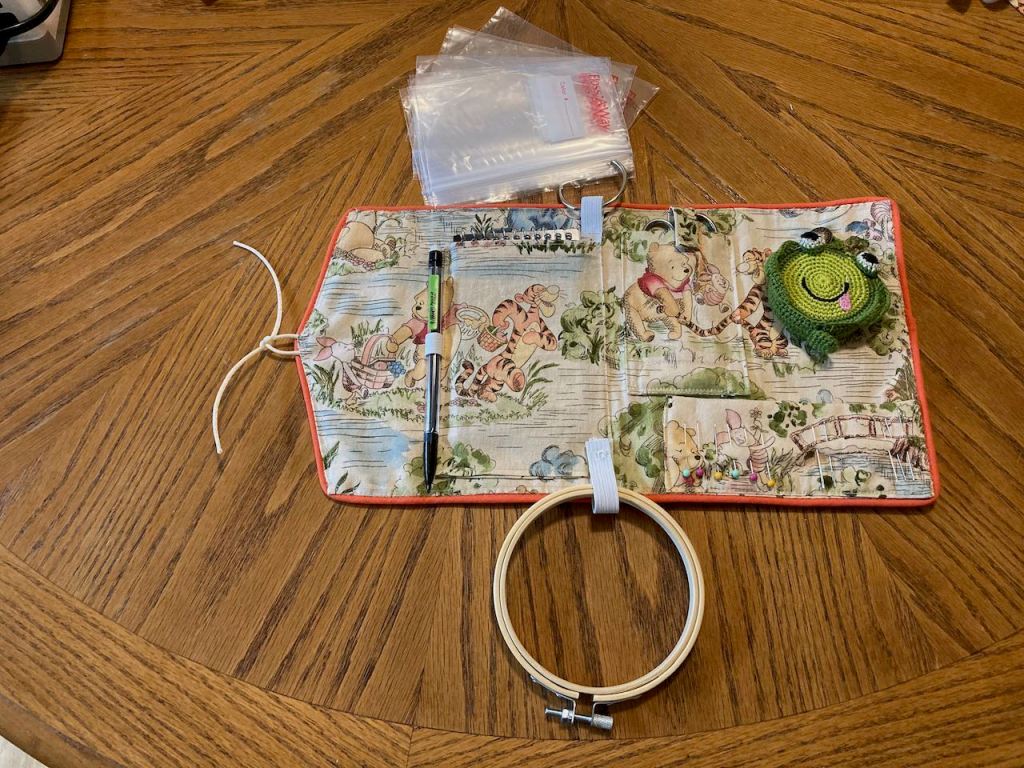
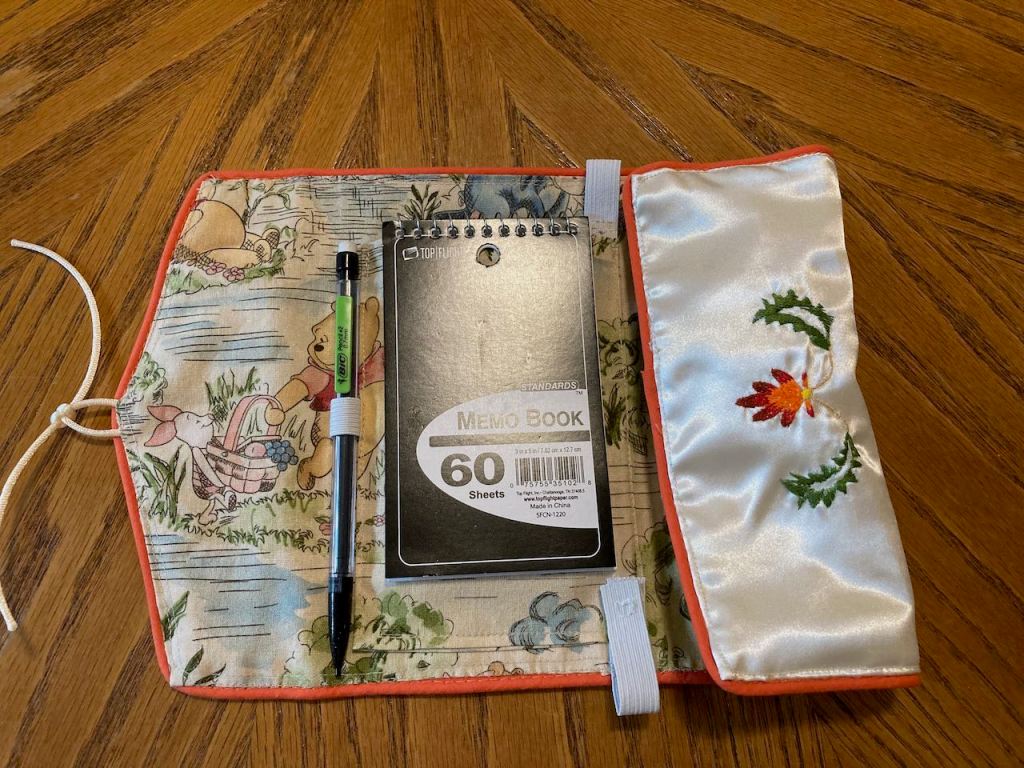
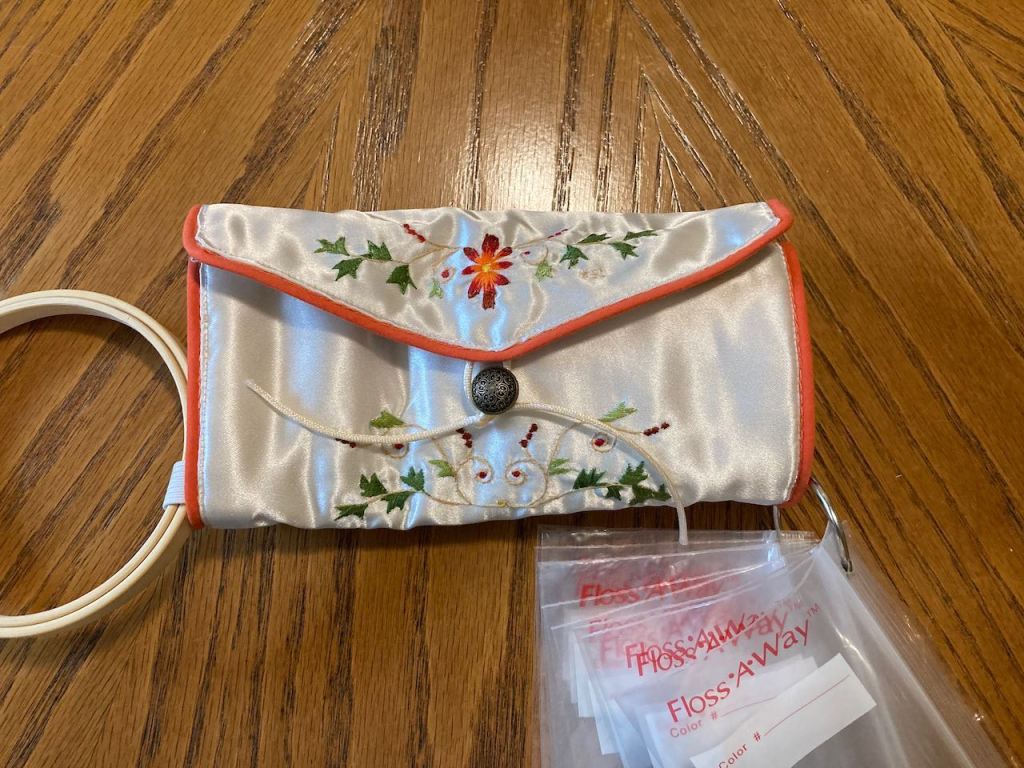
My “housewife” turned out nicely. Not as perfect as Alison’s, of course, but it will make a lovely gift.
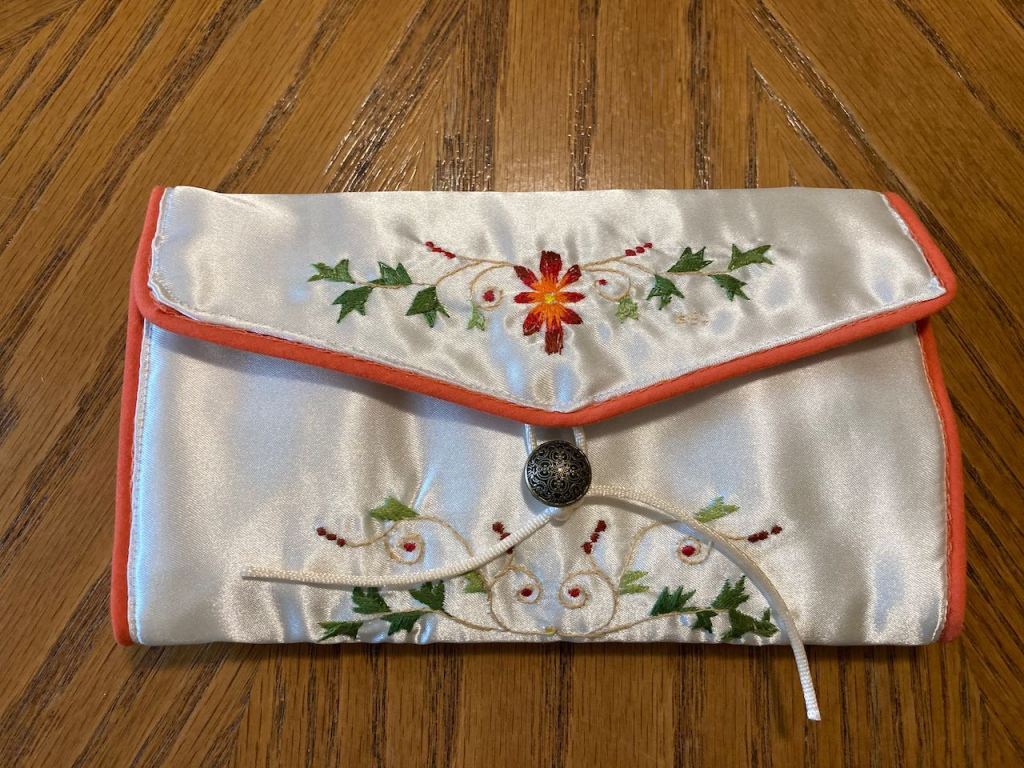
Bottom line: If you sew at all, you can probably do these projects. They will come out well even with cheaper materials and machine-sewing.
I hope later to try some of the other projects. I may start with the “Glittering Gold and Green Work Bag” for Beginners. Then I may make the Georgian Sewing Set (Intermediate), including a scissor pouch, needle case, and pincushion, to put inside it.
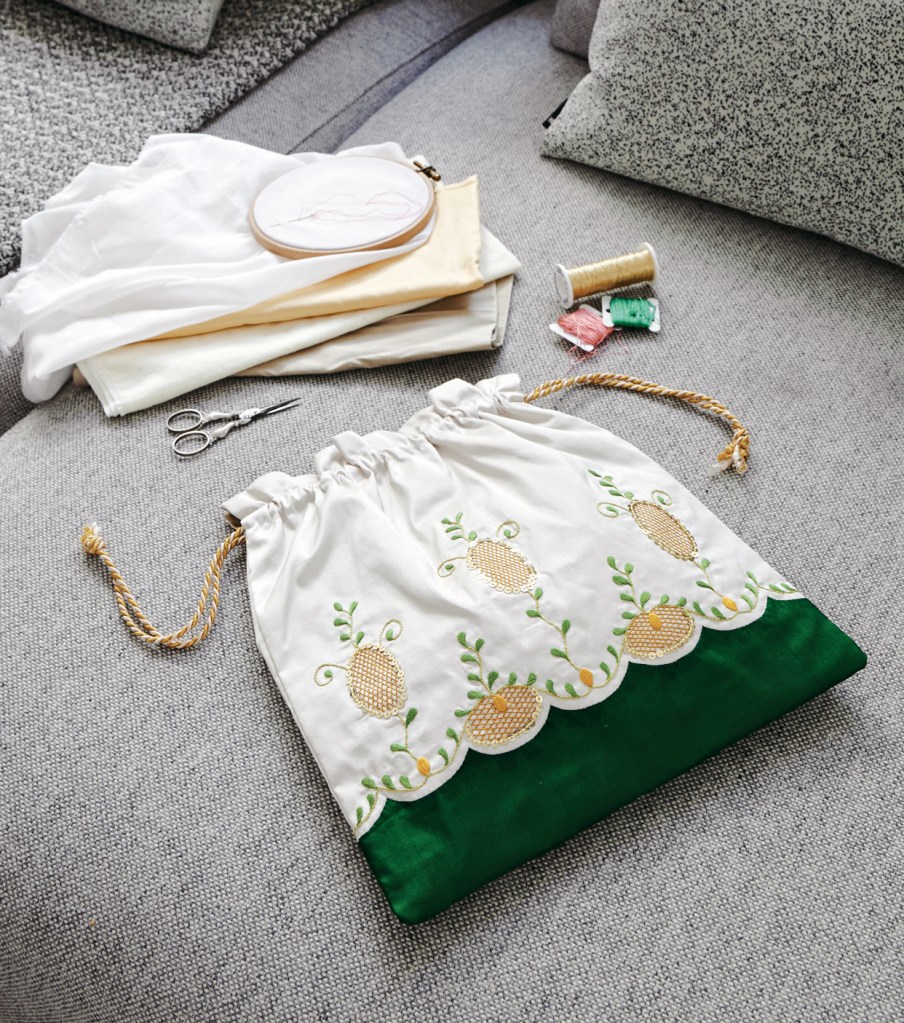
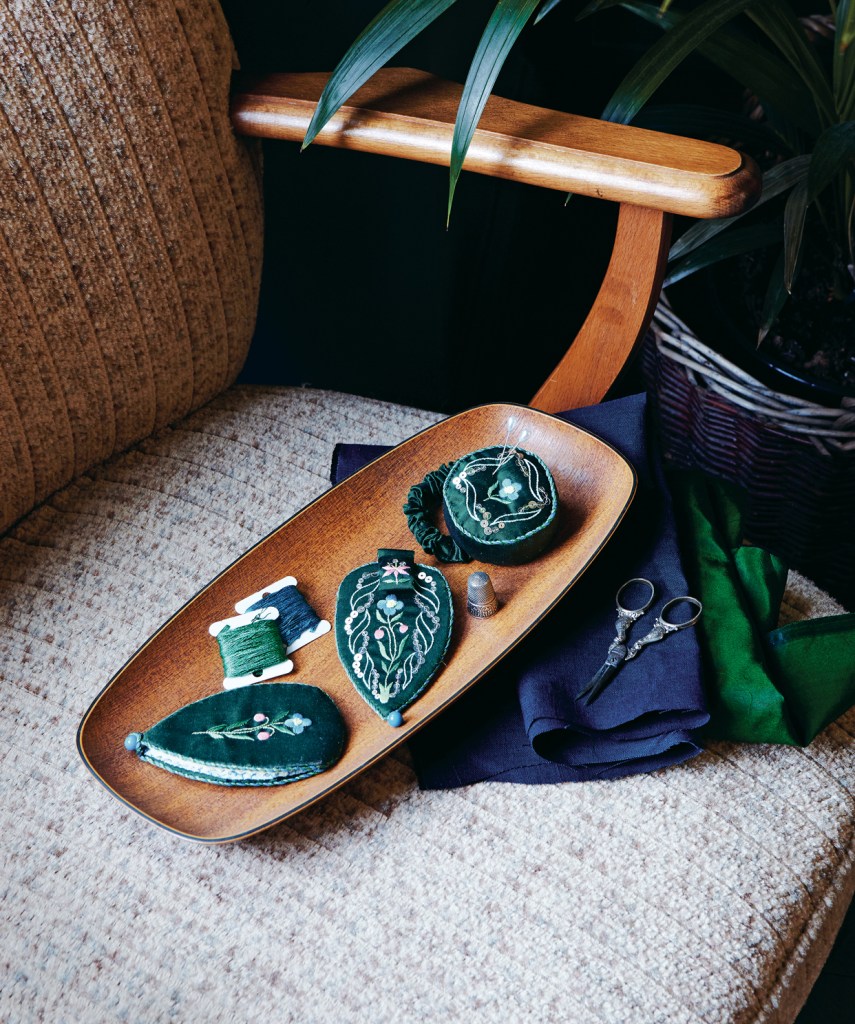
Happy sewing!
Do creative activities bring you joy? Personally, I believe that God our Creator created with joy, and that He made us in His image to also joyfully create beauty!
For a more complete description of Jane Austen Embroidery, see my review on Jane Austen’s World. This book would make a great gift (Christmas or otherwise) for the stitchers in your life. And if you are a stitcher yourself, the projects in it will also make wonderful gifts!
Jane Austen Embroidery by Jennie Batchelor and Alison Larkin is published by Dover Publications in the US and Canada, and by Pavilion Books in the UK.
Photographs from the book are by Penny Wincer; used by permission.
You can find Jennie’s fascinating talk on “Crafting with Jane Austen” at Jane Austen & Co. (Go down to the Staying Home with Jane Austen series, then click through the videos listed horizontally below that until you get to “Crafting with Jane Austen.”)
Jennie Batchelor’s website also links to other talks she has given.
Alison Larkin’s website includes blog posts on Georgian embroidery and lovely images.
(Note: I do NOT receive any income from products recommended here; I’m just telling you what I like!)
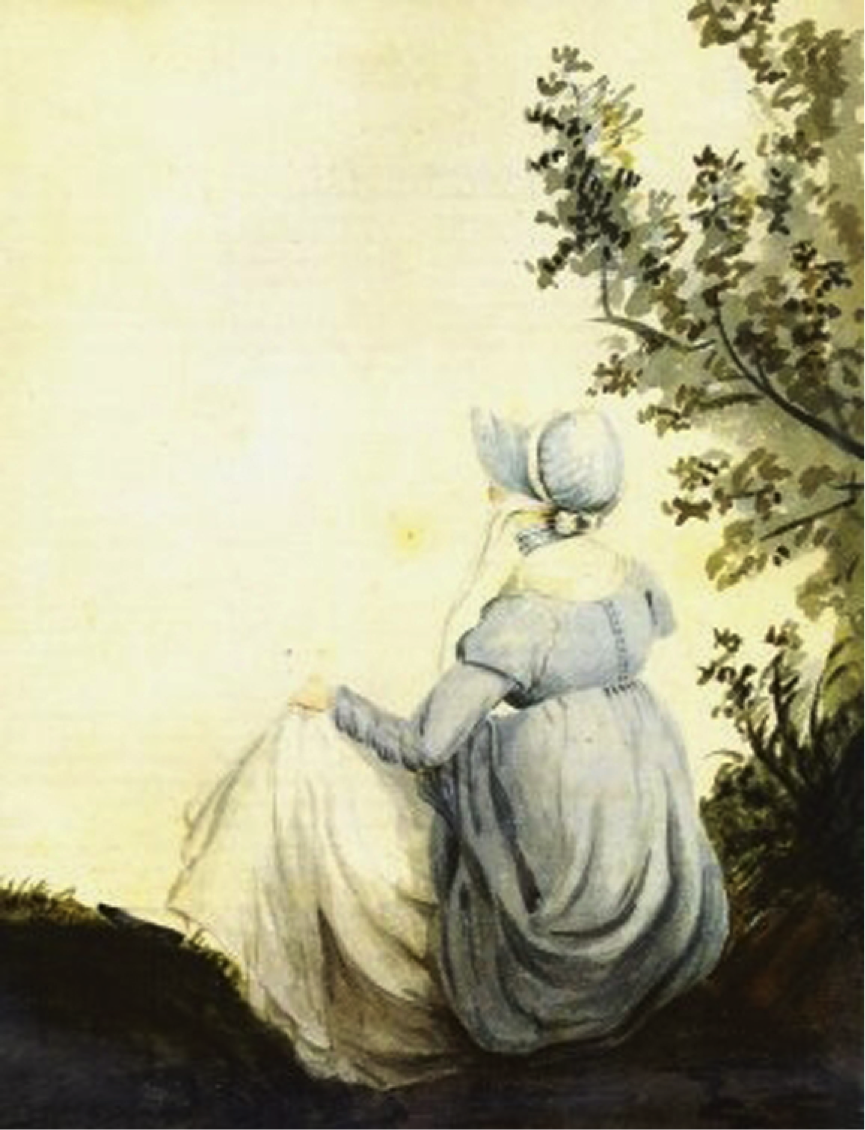


Spectacular project! Thank you for such an informative blog post.
LikeLike
I love this project… it’s on my list. I have a few other things I need to finish first, though.
LikeLike
Yes, I always have a series of projects to do! Isn’t it fun? 🙂
LikeLiked by 1 person
Yes, it is. I’m still working on the second side to a sweet bag project out of one of the issues of Piecework from this last year. Not much embroidery left to do on it, but finding the time and calmness of spirit…
LikeLiked by 1 person
Yes, it’s a lovely way to relax. And there’s the joy of seeing something beautiful come to life through the work of your hands.
LikeLike